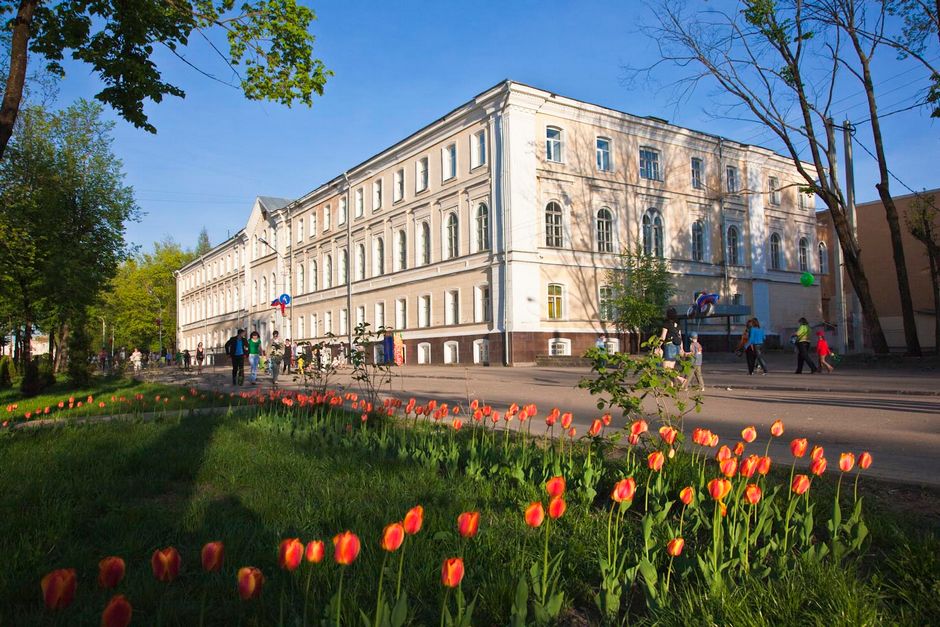«Fathers and Sons» of the № 1 gymnasium named after N.M. Przewalski

The building of gymnasium № 1 named after N.M. Przewalski, which is located down the Lenin Street, house 4, has a long history. Its building began in 1858 and continued for four years. On the solemn foundation laying of the building was present the Emperor Alexander II. Before the revolution in the house church school in «special Redeemer Cathedral» stored silver hammer and shovel, which the emperor used for making the first brick laying.
In 1864, after the interior decoration setting works were completed, the provincial gymnasium moved to the building.
Under the burden of the current school overload contemporaries can easily think, that in the old days it was easier to learn. And they will be wrong. On a poor schoolboy there was a hit of huge stream of knowledge, so not everyone could just stay, being on his feet. Science courses included algebra, geometry, physics, geography, statistics, philosophy, history, Latin, German and French, law and others. The program provided also optional, «good for young people» subjects: gymnastics, music, dancing, fencing. According to the statistics, not everyone, who entered the gymnasium, stayed till the last grade. Strong, but not good in the sciences, the child, hopelessly waved his hand, and said to his distressed parents: «I’ll better go for military service!» 
The gymnasium classes were especially empty at the time of military campaigns. High-school students went to the Territorial Army, entered the military schools. So it was in 1812, when Napoleon approached to Smolensk. It was in the middle of the XIX century, when the Crimean War started. The one also didn’t want to learn during the period revolutionary turmoil of the first half of the XX century.
According to the cultural heritage object passport, drawn up in January 1975, the gymnasium building is a memorable place, connected with the revolutionary activities of high school students, with their struggle against the imperial autocracy. During the first Russian revolution (October 1905) here were carried out anti-government rallies, distributed revolutionary leaflets and proclamations. The students have initiated a citywide strike in October 11, 1905, which was the part of the all-Russian political strike.
However, between the gymnasium student actions, which were mentioned above, there is one essential difference: in the first two cases — it was a struggle of a single state for its interests, in the last — they rebelled against the autocracy, thanks to that, in fact, they had the opportunity to join the world of science. After all, by the high command of the monarch in the distant 1786 «with extraordinary triumph» was opened general and free Main public school (from which in 1804 was founded the gymnasium). So here are the «fathers and sons.»
Currently the building is an object of cultural heritage.
It is a good example of eclectic architecture of the middle XIX century with characteristic motifs of classicism and the Italian Renaissance in this time. The building’s large size and representativeness are typical for the school buildings in the provincial cities of Russia.
Near the main building survived two rectangular one-story buildings of the 2nd half of the 19th century, directly related to the building of the gymnasium: residential wing at the gymnasium, intended for inspector’s staying (Lenin Street, 4 (ex. 2) and outbuilding (south-western wing) (Lenin Street., 2a).
Their appearance is dominated by classical motifs, complemented by methods of eclectic. 
The residential wing at the gymnasium is now used for placement of shops MBGEI gymnasium № 1. Named after N.M. Przewalski, outbuilding (south-western wing) for the administration’s of the Central park of culture and rest «Lopatinsky garden» placing.
Both buildings are objects of cultural heritage.


